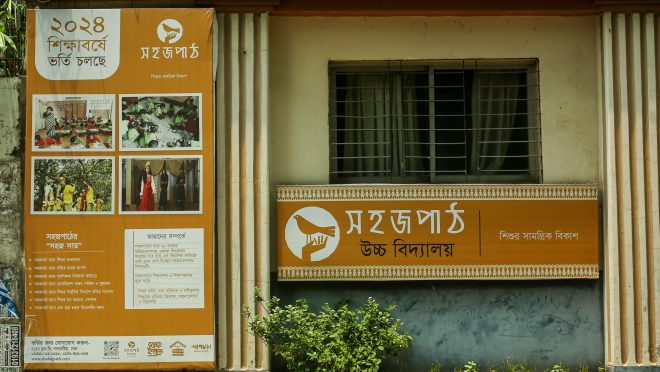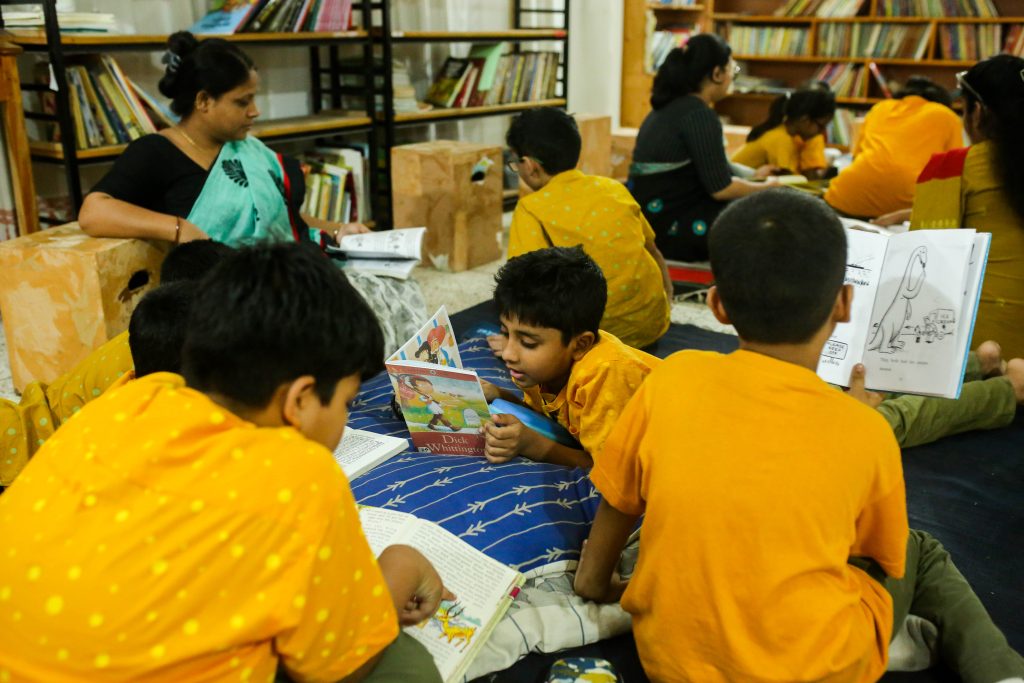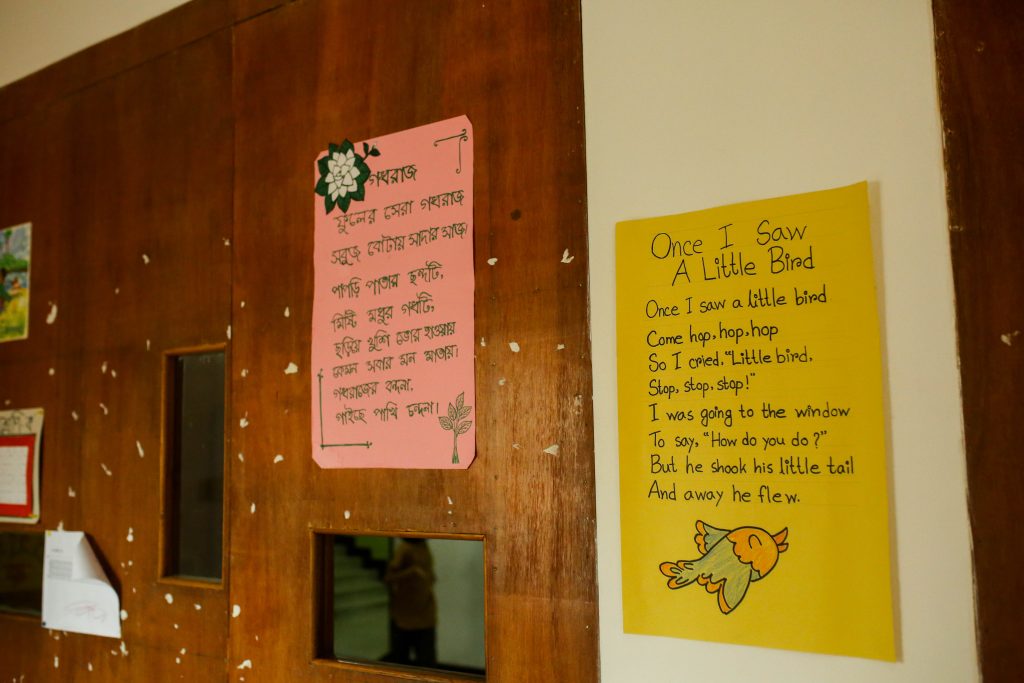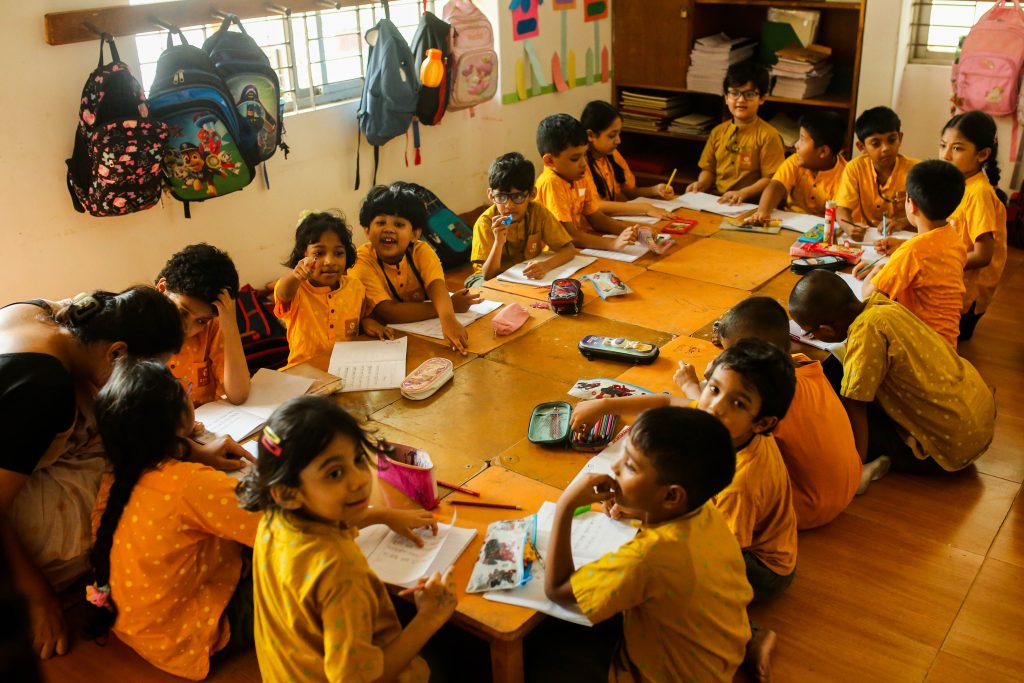Shahajpath High School, where students are treated as learners, not examinees
Shahajpath High School, where students are treated as learners, not examinees

Established in 2018, Shahajpath High School has been exceptional from the very beginning with their methods and approach to teaching kids to be students, not just examinees.
Located in Lalmatia, Block #B, Rd. No 7/17, Dhaka, Shahajpath High School is what many of us grownups had only dreamt of regarding high school education in Bangladesh.
Let me break it down for you.
The male teachers here are addressed as “Bhaiya” instead of Sir and female teachers as “Apu/Apumoni” instead of Ma’am. The students wear a very comfortable and lightweight simple uniform: A fatua and trousers. The colour of the uniforms for kids are lighter and eventually gets darker for the teens and young adults. This is intentionally done to highlight the growth and maturity of the students as they move to upper classes in the high school.

The lessons are not taught in order for them to memorise it for their exams but rather for them to research on it with their classmates and present it back to the class to showcase what they have actually learned from it by themselves.
There are tons of extra-curricular activities for all the classes, including group and subject wise activities, number of events every year, excursions to weeklong picnics, from playgroup to class 10. Healthy and nutritious in-house tiffin is also available for all the students, starting from Bangladeshi meals and fruits to popular rich fast-food meals.
Activities like dance, music, painting, debating, instant knowledge tasks, creative writing, making magazines, paper figures, study models from a young age are how Shahajpath practices to build these children from the ground up. Events like Fol Uthshob (Fruit Festival), Putul Biye (Doll Weddings), Bajar Bajar (Market/Shopping) enables students to learn about the environment, bargaining and negotiating with practical items and more. Shahajpath inspires these kids to innovate and even share knowledge without any hesitations.
As I sat down with Momena Begum, principal of Shahajpath High School, I could not but express to her how different this school felt compared to others and to that she replied, “It is not different; it is exactly how a school is supposed to be.”

“All the artworks you see in the stairs and many other places are kept for the enjoyment of the kids,” she said.
Shortly before sitting with Momena Begum, she took me to see a kid’s dance class which was basically a part of the Social Science class and was not meant for any upcoming event or so. The kids were enjoying themselves, following the instructor, dancing with their friends, with a sense of discipline. Watching them melted my heart instantly.

During our conversation, Momena apa talked about her inspiration while remembering Waheedul Haq, who was a journalist, writer, and musicologist. “From him, we learned to respect kids and not just love them.” She then mentioned about their practice of addressing male teachers as “Bhaiya” and female teachers and herself as “Apu” or “Apumoni” and not Sir/Ma’am/Principal so that the kids do not feel distant or afraid to approach the teachers with their problems. She believes having a friendly environment with necessary boundaries enables kids to give and take in terms of learning from an early age.

Shahajpath High School’s education offering starts from playgroup to class 10. Their student capacity is around 20-25 students for kids classes; the capacity increases with the higher grades with even more sections. She mentions that the school discourages extra tuitions/coaching and even forbids any home tutoring to ensure their teaching method is enabling students to study on their own and they welcome feedback in case there is any drawback.
After discussions on varied topics, I drew her attention towards the tendency to strive for getting good marks which often works as a fear amongst all students as assessments approach them. To that, Momena replied that they do believe students should not run after marks. “They’re students, not examinees” she said.


